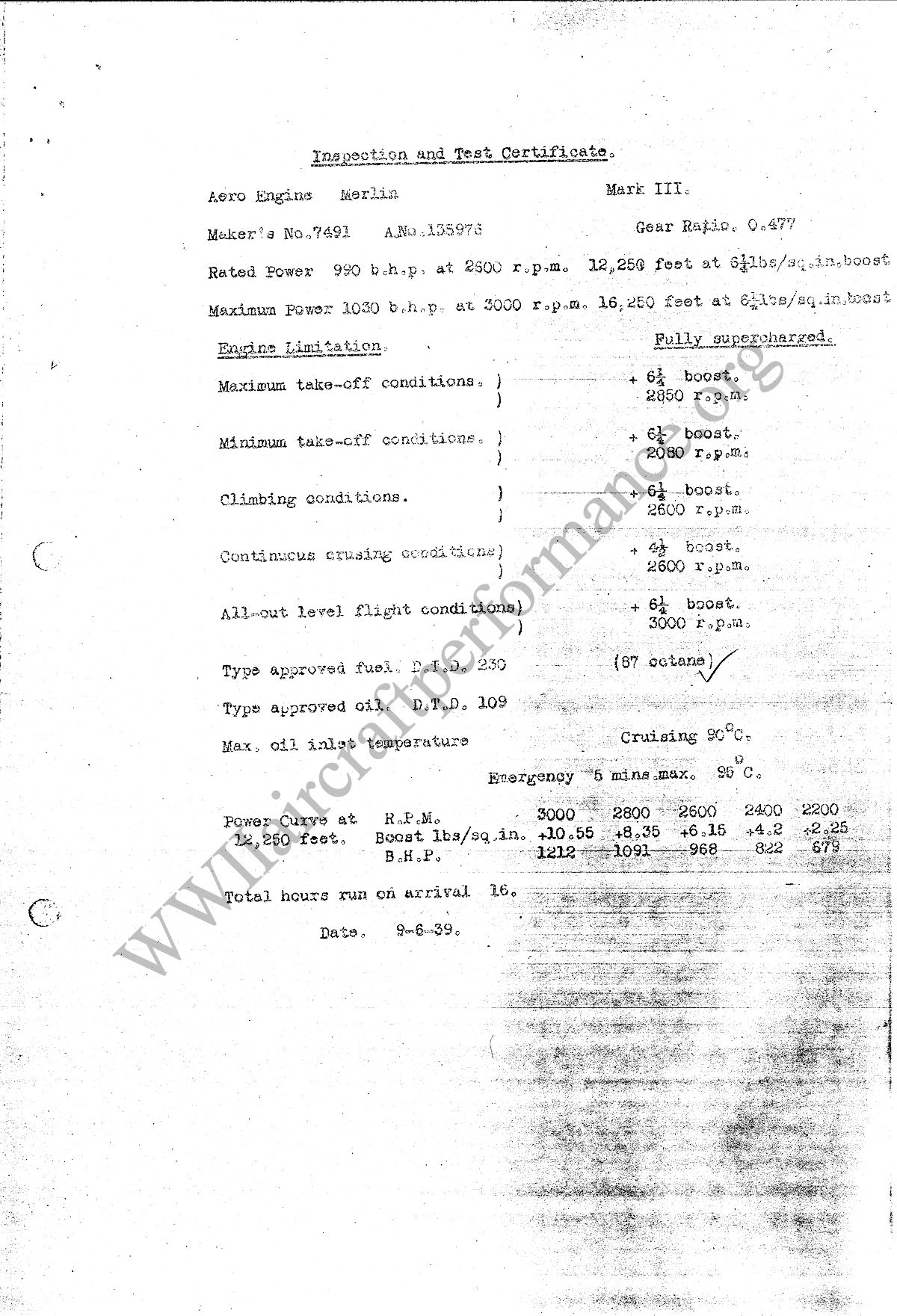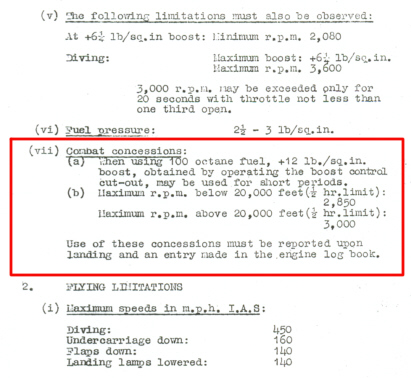
 |
|
#151
|
||||
|
||||
|
Quote:
Luckly i checked today spitfireperformacne site and i found interesting data for Merlin III at 87 octan fuel which i didnt see before:  So for Merlin III at 87 octan fuel we have: max take off - +6 1/4 at 2850 RPM climbing - +6 1/4 at 2600 RPM All-out level flight - +6 1/4 at 3000 RPM With 100 Octan fuel modification Merlin III power settings was rised to:  So with Merlin III at 100 Octan we have: take off - +6 1/4 at 3000 RPM 1/2 hr climbing - +6 1/4 at 2850 RPM ( below 20 000 ft) and at 3000 RPM (above 20 000 ft) all-out level flight - +6 1/4 at 3000 RPM ( 5 minutes) emergency power - +12 lbs at 3000 RPM ( 5 minutes) Of course for Merlin XII nomial RPM should be 2850 not 2600 the same like with Merlin III at 100 Octan fuel. Last edited by Kwiatek; 05-14-2012 at 04:00 PM. |
|
#152
|
||||
|
||||
|
Quote:
|
|
#153
|
||||
|
||||
|
Quote:
Cruise climb is calculated as it varies with conditions and is of most practical value in a turbine engine. There are two approaches. Optimum Climb speed produces the best overall fuel economy. It seeks to balance the most altitude over time using the least amount of fuel with the most distance covered over the ground. Best Economy Climb speed is the second method and it factors operating cost, maintenance, and crew cost. Neither one is applicable to a WWII piston engine fighter. Piston engines the main benefit is engine cooling, visibility and comfort. |
|
#154
|
||||
|
||||
|
Generally max climing settings could be used for level flight much more safetly beacuse there is better airflow by radiators which casue better cooling engine condition then in steady climb at the same engine settings. So if engine have 1/2 hour limit for max climbing settings it could be used even more safetly for level flight. The one thing which is imprortant here is just fuel usage. Just all.
|
|
#155
|
||||
|
||||
|
Quote:
|
|
#156
|
||||
|
||||
|
Quote:
Quote:
|
|
#157
|
||||
|
||||
|
Glider,
I think you asked about the Bf-109 Load factor limits. I am not sure of the specifics but I do know the engineering safety margin were higher in German aircraft. Take away being the airframes are not rated on the same scale. |
|
#158
|
|||
|
|||
|
It's interesting to note that publications from 1938 and 1939 give maximum take-off engine speed of 2850 rpm for both Merlin II and III. Publications from 1940 give 2850 for Merlin II and 3000 rpm for Merlin III. The increase is not associated with the use of 100 octane fuel.
|
|
#159
|
||||
|
||||
|
Quote:
|
|
#160
|
||||
|
||||
|
Quote:
Absolutely NOTHING to do with the use of 100 Octane fuel. |
 |
|
|